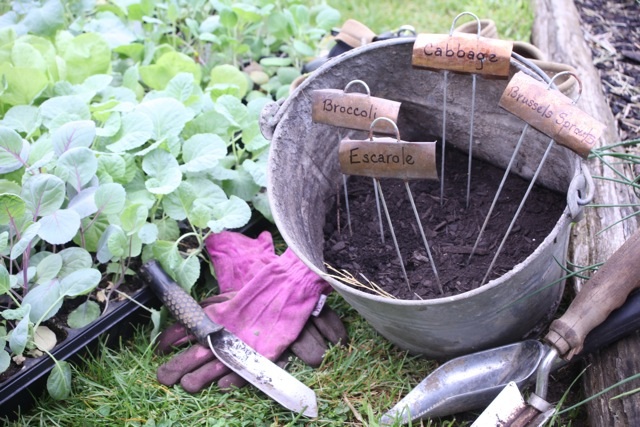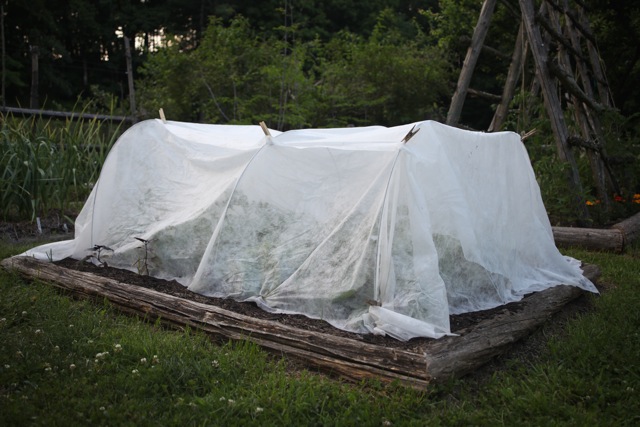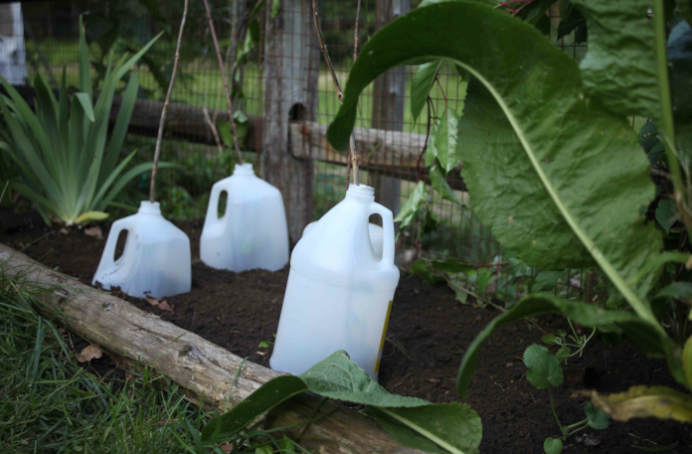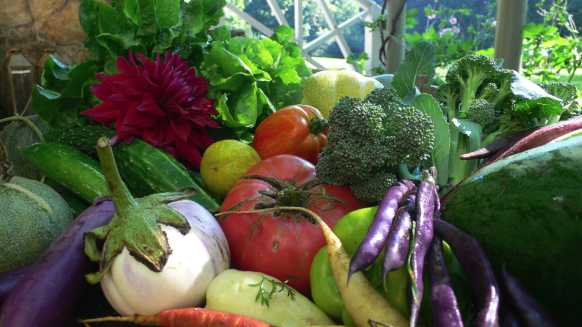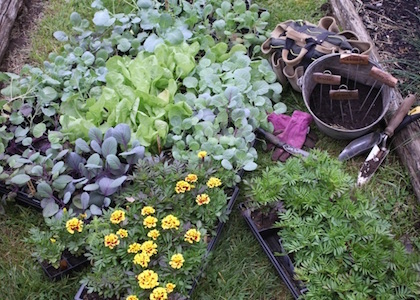
Starting Seeds Indoors – part 2 of 2
By Pamela Page
When they germinate, seedlings emerge with one or two embryonic leaves called cotyledons. Then they put on their first post-embryonic leaves, known as “true leaves,” and that is when I deliver my transplants into the hands of the transplant nanny – a large grow light in my laundry room. A fan keeps the nursery fresh, and a boom box keeps my seedlings entertained.
Today my little darlings are listening to Debussy. I imagine they prefer “Afternoon of a Fawn” and “Reverie.” I skip “Jeux de Vagues” (it will make them seasick), “Nuages” (too ominous) and “Fetes” (they’re not old enough to understand it.)
At least I don’t talk to my plants. Which is more than you can say for the English. Last year in Great Britain, a dozen tomatoes listened to taped voices through headphones clamped to their pots. The vegetables were participants in a contest designed to identify the most plant-friendly human voice. The voice that “grew” the biggest tomato won. The winner was a woman. Ladies, are we really surprised?
I don’t fertilize my seedlings while they’re in the laundry room. But approximately four weeks after they’ve germinated, I do transfer my tomatoes, eggplants and peppers to larger cells or pots. I add about 25 percent more garden soil to the potting mix at this point to give the young plants a taste of their future home.
When the weather is completely settled, and the risk of a frost is well passed, I prepare to plant or “set out” my seedlings. No matter how healthy and grown up they may seem, transplants must make a gradual transition to the real world. If you throw them straight into the garden, they’ll end up with sunscald, a plant’s version of sunburn. Therefore, on Day 1, my seedlings spend no more than an hour in the sun. On Day 2, I increase the time to two or three hours. By Day 3, they’re almost sun worshippers. On Day 4, they have their first overnight. And by Day 5… sniffle, sniffle, sob… my sweethearts are ready to leave the nest!
I hope for a cloudy day, and when it arrives, in the evening I set out my seedlings. I toss a pinch of compost into the bottom of each planting hole, and I set each seedling in a little well. Then I water.
Young tomatoes and pepper plants are fairly pest-resistant. You will, however, probably want to protect your young eggplants and cabbages from flea beetles and cabbage loopers with floating row covers. Floating row covers, made from light fabric and flexible hoops that allow the fabric to float above the plants, are available online.
You can also protect your seedlings with hot caps, so called because they keep the plant warmer. I make my own hot caps out of plastic gallon jugs.
Do the plants I grow yield in proportion to the extra care I give them? Do my friends and family really savor what they become – soups, salads, sides, sauces, jellies and sorbets – because they actually taste better? Plants might listen, but they definitely can’t talk, and people can be ever so polite, but I’d like to think that the answer in both cases is, “Hell, yes!”
